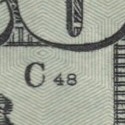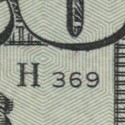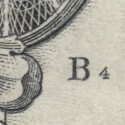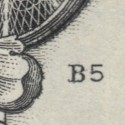

While the "Kodachrome" redesign was still going on, the BEP also began the process of modernising its printing equipment yet again. The new offset presses that produced the background tints on the colorised notes were already capable of handling paper sizes larger than the 32-note sheets the BEP had been using for the past fifty years, so the BEP began to upgrade the remaining parts of the printing process to match.


Starting in 2008, intaglio printing of several denominations was done on new Super Orlof Intaglio (SOI) presses, likewise capable of working with larger sheets (though still printing on 32-subject sheets for the moment). A subtle design change distinguished $20 notes printed on the SOI presses from those printed on the older presses: the SOI $20 notes were given an enlarged face plate number, of the same font size used for the Fort Worth back plate numbers. For unknown reasons, however, only the $20 notes received these enlarged plate numbers; other denominations printed on the SOI presses continued to use face plate numbers of the standard size.


A few years later, the BEP acquired the last piece of the puzzle: the Large Examining and Printing Equipment (LEPE) that could serial-number, inspect, and cut the larger sheets. Production of currency in 50-note sheets could then begin, starting with the $1 notes of Series 2013. Again a subtle design change was made in order to distinguish the notes printed in the new format: in the letter/number pair indicating the position of each note on the sheet, the letter was made smaller and the number larger, so that the two were now the same size.
To date, only the $1 and $5 notes have been printed in 50-subject format, but other denominations are expected to follow. Currently, a majority of the BEP's presses are still the older models that can handle only the 32-subject sheets, so the transition will last several more years at the least.
Looking forward, the BEP is also conducting testing of new security features and printing techniques that could potentially make their appearance in the next generation of currency designs. These future-generation notes, targeted for a release date of 2026 or so, are slated to incorporate raised or embossed symbols, different on each denomination, that will enable the visually impared to more easily identify them. Beyond that, little is known of the designs being considered. Time will tell....